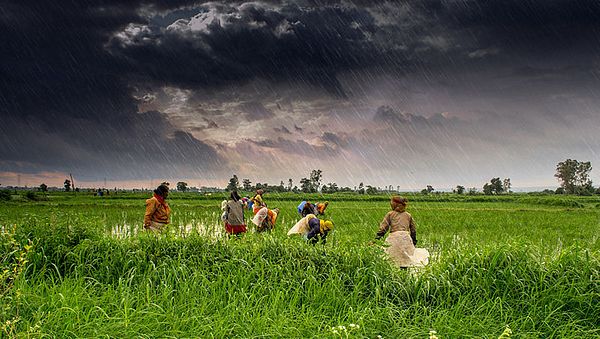Context:
A section of WTO members have raised concerns about India’s $48 billion farm input subsidies.
Key Highlights
- Some WTO members, including the US, UK and Japan have raised questions regarding India’s $48 billion farm input subsidies for 2022-23.
- These concerns were brought up during a committee on agriculture meeting held recently.
- India’s Explanation: India explained that the input subsidies are mainly allocated for power, irrigation, and fertilizers.
The government insisted that the increase was due to inflation and rising fertilizer costs, and emphasized that this information had been duly notified to the WTO. - WTO Notification: In a submission to the WTO’s Committee on Agriculture, India notified that the amount of its input subsidies for “low-income or resource-poor” farmers stood at $48.1 billion in 2022-23.
Under WTO rules of special and differential treatment, developing countries are allowed to provide such subsidies to low-income or resource-poor farmers.
About World Trade Organisation (WTO)
- Established in 1994 as the successor to General Agreement on Tariffs and Trade (GATT) which was formed in 1948.
- Headquartered in Geneva, Switzerland.
- It is the only global organisation on trade regulations among 164 member nations.
About Agreement on Agriculture (AoA)
- The Agreement on Agriculture (AoA) is a landmark international treaty established under the World Trade Organization (WTO) in 1995.
- The agreement was agreed upon during the Uruguay Round (1986-1994) of negotiations within the General Agreement on Tariffs and Trade framework.
- Its primary goal is to reform global agricultural trade by promoting fair competition, improving market access, and reducing trade distortions. It includes Subsidies which are categorized based on their trade distortion impact:
- It includes Subsidies which are categorized based on their trade distortion impact:
- Green Box: To qualify for this category, subsidies must not distort trade or cause minimal distortion. They must be government-funded and should not involve price support through consumer charges.
- Amber Box: This category includes all domestic support measures in agriculture that are deemed to distort production and trade, with exceptions. These measures are subject to reduction commitments.
- Blue Box: This category offers an exemption from the general rule that production-linked subsidies must be reduced or kept within defined minimal levels. It includes payments tied to acreage or animal numbers, alongside schemes that limit production by imposing quotas or requiring land set-asides.
- As per the AoA, product-specific support should not exceed 5% of the total production value of the agricultural product.
However, for developing nations like India, the ‘de minimis’ ceiling is 10%.

Way Forward
- Enhance Developing Country Participation: Ensure active involvement of developing nations like India in shaping agricultural trade agreements, and addressing their concerns.
- Reform Subsidy Mechanisms: India also needs to reform and rationalize its subsidy programs to balance farmer support with trade fairness, thus ensuring that the subsidies are targeted, effective, and compliant with WTO rules.
- Address Food Security: Develop policies that safeguard vulnerable regions, and promote global cooperation to mitigate food crises.
- Monitor and Evaluate: Establish robust assessment mechanisms for trade agreement impacts, ensuring continuous policy review and adaptation.

